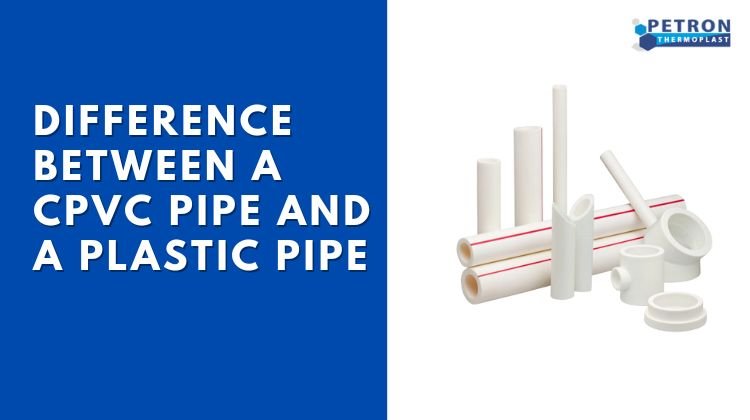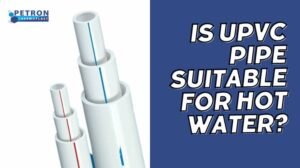Introduction
When it comes to plumbing systems, choosing the right type of pipe is crucial for ensuring reliable and durable performance. Two common options that often come up in discussions are CPVC pipes and plastic pipes. While both serve as popular choices, they have distinct characteristics and purposes. In this article, we will explore the key difference between a CPVC pipe and a plastic pipe, their applications, and the factors to consider when selecting the appropriate type for your plumbing needs.
What is a CPVC Pipe?
CPVC, or Chlorinated Polyvinyl Chloride, is a type of thermoplastic pipe made from a blend of PVC and chlorine. The addition of chlorine enhances the CPVC pipe’s durability and temperature resistance, making it suitable for hot water applications. CPVC pipes are known for their ability to withstand higher temperatures and pressure compared to standard PVC pipes. Additionally, they have superior chemical resistance, making them suitable for a wide range of plumbing applications.
Understanding Plastic Pipes
Plastic pipes, on the other hand, are a broader category that encompasses various materials such as PVC, PE (Polyethylene), PP (Polypropylene), and PEX (Cross-linked Polyethylene). Plastic pipes are lightweight, easy to install, and resistant to corrosion, making them a popular choice for both residential and commercial plumbing systems. Each type of plastic pipe has its own unique properties and applications.
Difference Between a CPVC Pipe and a Plastic Pipe
Temperature and Pressure Ratings
One of the significant differences between CPVC pipes and plastic pipes lies in their temperature and pressure ratings. CPVC pipes are designed to handle higher temperatures than regular PVC pipes, typically ranging from 180°F (82°C) to 200°F (93°C). In contrast, plastic pipes like PVC have a lower temperature rating, typically around 140°F (60°C) or lower, depending on the specific material.
When it comes to pressure ratings, CPVC pipes are known for their higher pressure capacity compared to most plastic pipes. This makes CPVC pipes suitable for hot water distribution systems, while plastic pipes are often used for cold water applications or where lower pressure requirements exist.
Chemical Resistance
Another important factor to consider when choosing between CPVC pipes and plastic pipes is their chemical resistance. CPVC pipes exhibit excellent resistance to a wide range of chemicals, including acids, alkalis, and many solvents. This characteristic makes CPVC pipes an ideal choice for applications involving aggressive chemical environments.
Plastic pipes, on the other hand, have varying levels of chemical resistance depending on the material used. PVC pipes, for example, offer good resistance to many common household chemicals but may not be suitable for highly corrosive substances. It is essential to consider the specific requirements of your plumbing system and the types of fluids or chemicals it may come into contact with before selecting a suitable pipe material.
Installation and Fittings
Both CPVC pipes and plastic pipes are relatively easy to install, thanks to their lightweight nature and simple joining techniques. However, there are some differences in the fittings used for each type.
CPVC pipes typically use solvent cement fittings, which create a strong, leak-proof joint when properly installed. These fittings require the application of solvent cement to both the pipe and the fitting, ensuring a secure connection. On the other hand, plastic pipes may use various types of fittings, including compression fittings, push-fit fittings, or heat fusion techniques, depending on the specific material.
Applications
CPVC pipes find extensive use in hot and cold water distribution systems, residential and commercial plumbing, industrial applications, and fire sprinkler systems. Their ability to handle high temperatures and pressure, coupled with their chemical resistance, makes them suitable for a wide range of demanding applications.
Plastic pipes, with their versatility and affordability, are commonly used for cold water plumbing systems, drainage systems, irrigation, and underground utilities. Each type of plastic pipe has its own advantages and limitations, so it is crucial to select the right material for the specific application to ensure long-term performance.
Factors to Consider
When deciding between CPVC pipes and plastic pipes, several factors should be taken into consideration:
- Temperature and pressure requirements: Determine the maximum temperature and pressure the pipe will encounter in your plumbing system.
- Chemical compatibility: Consider the type of fluids or chemicals the pipe will come into contact with and choose a pipe material with suitable chemical resistance.
- Application: Evaluate the specific application requirements, such as hot water distribution, cold water plumbing, or drainage systems.
- Building codes and regulations: Ensure compliance with local building codes and regulations that may dictate the type of pipe materials allowed for specific applications.
Conclusion
In conclusion, understanding the difference between a CPVC pipe and a plastic pipe is crucial for making informed decisions when it comes to plumbing installations. While CPVC pipes excel in high-temperature and pressure applications with their enhanced durability and chemical resistance, plastic pipes offer versatility and affordability for a wide range of plumbing needs. By considering factors such as temperature, pressure, chemical compatibility, and application requirements, you can choose the most suitable pipe material for your specific plumbing project.
Remember to consult with experienced professionals, such as CPVC pipe fittings manufacturers, to ensure you select the right pipe and fittings combination that meets your unique requirements. With the right choice, you can enjoy a reliable and long-lasting plumbing system that suits your needs.





Pingback: togel in
Pingback: อัตราการจ่ายเงิน เกมพนันไพ่ บาคาร่าสายฟ้า
Pingback: เช่ารถตู้พร้อมคนขับ
Pingback: webcam chat
Pingback: แว่นกันแดดแบรนด์
Pingback: massage Bangkok
Pingback: King Chance